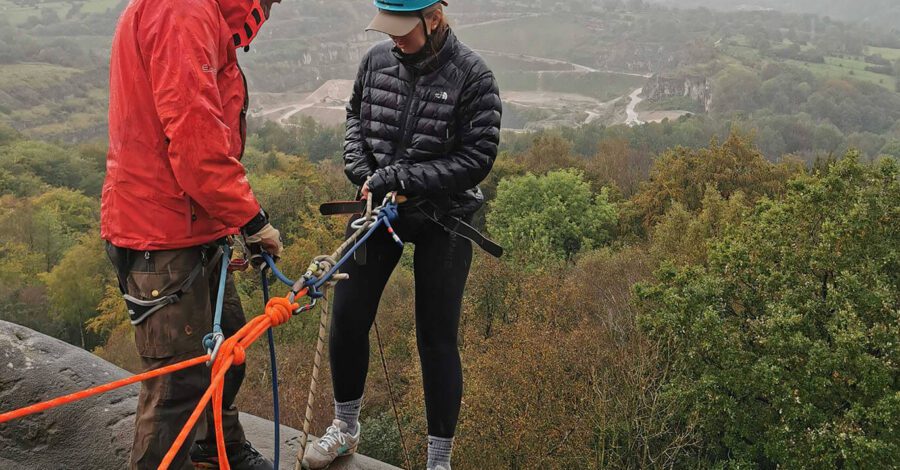The Target Trap
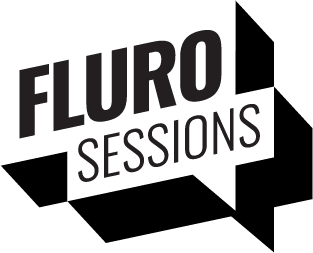
Ever sat in a meeting where someone casually dropped a target that made your stomach sink? You know the type – the ones that sound great in the boardroom but keep you up at night wondering if they’ve confused “ambitious” with “impossible.”
You’re not imagining things. As marketing budgets shrink and expectations soar, we’re seeing a dangerous trend: targets that exist in a parallel universe where resources are infinite and timelines are suggestions.
The Numbers Game Nobody’s Winning
Let’s be honest there’s a growing chasm between what’s expected and what’s achievable. “It’s not unusual for a client to come with unrealistic expectations of what they can achieve with their budgets” says Hannah, Account Director. When expectations creep into the impossible, it pays to revisit the business strategy and re-align with goals originally set. “Typically, we would create a list of all the deliverables on the wish list, and then decide which ones are most important. You could put them into sections called “must-have now,” “must-have but in the future,” and “nice to have”. That way, it feels less like ‘no’ and more like ‘not yet’.
Pro tip – ‘It can help to set a calendar of those activities against the business goals, any sort of events or product launches, and then schedule those across a period of maybe 6 to 12 months or even upwards.” Hannah, Account Director.
The Multi-Target Trap
We’ve all been guilty of it: trying to make every campaign achieve everything for everyone. But here’s the uncomfortable truth: when everything’s a priority, nothing is.
Pro tip – “Stop setting multiple targets for one activity. Maximise impact with fewer, more strategic projects.” Hannah, Hannah, Account Director.
Speaking Truth to Power
Here’s where it gets interesting (and a bit uncomfortable): the disconnect often starts at the top. Your senior leadership team wants results – big ones. But as Account Director, Jen emphasises, “having an open dialogue with your SLT or board is absolutely key. In that communication, manage their expectations. Talk to them about what success looks like, and what those KPIs are.”
Don’t wait for the quarterly review to reveal that those targets were fantasy. Build the bridge between ambition and reality early and keep reinforcing it. It all comes back to transparency, open dialogue, and managing expectations.
Pro tip – “Be transparent. Keep that line of communication open. Just keeping them abreast of what’s going on means you’re not waiting for a six-month board meeting to drop something on them.” Jen, Account Director.
The False Economy of Corner-Cutting
When the pressure’s on and budgets are tight, it’s tempting to start making compromises. A little corner cut here, a standard lowered there. But before you know it, you’re looking at your brand in the mirror and barely recognising it.
“Be wary of the impact cost-cutting can have on your brand” says Head of Content and Strategy, Lara. “At the very least it will become diluted, but it could get a lot worse and actually start to damage your reputation.” A cost-effective way to mitigate this is to appoint a brand guardian. Someone who knows the limits of the brand and can protect it from being watered down with bad practices and careless activities.
Pro tip – “Think of your brand guardian as your voice of reason – the one who stops you from making those “just this once” compromises that slowly erode your brand’s value.” Lara, Head of Content and Strategy.
The Way Forward: Quality Over Quantity
So what’s the solution? It’s not about lowering ambitions – it’s about raising the quality of our goals. Here’s what works:
1. Fewer, Better Target
- Focus on what moves the needle
- Align goals with actual resources
- Choose quality over quantity
2. Open Communication
- Regular dialogue with stakeholders
- Early flagging of potential issues
- Clear alignment on what success looks like
3. Brand Protection
- Designated brand guardians
- No compromise on core values
- Strategic partnerships with agencies who get it
The Bottom Line
The gap between expectations and resources isn’t going away. But neither is the need for strategic, effective marketing that delivers real results. The question is: are you ready to have the honest conversations that bridge that gap?
We’ll continue to explore these themes in our upcoming social campaign, where you’ll hear more from our team on managing tight budgets, navigating data overload, and making smart marketing decisions. Keep an eye out for our video series featuring Hannah, Jen, and Lara, as they share insights on how to navigate these challenges effectively.
Be strategic. Stay bold.
Let's start something
Want to talk to us about a project?
Just get in touch, we'd love to chat.
Send an email to hello@fluroltd.com
Ring on 01628 525 449
The Data Dilemma

As a marketing manager, you’re no stranger to the constant pressure of making data-driven decisions. But let’s be honest: how often do you feel truly confident in the data at your fingertips? If you’re like most of us, the answer is “not often enough.” Welcome to the data dilemma – a challenge that’s as universal as it is frustrating.
The Reality Check
You want to spearhead brilliant campaigns that drive results, not spend hours wrestling with spreadsheets and questioning the validity of your metrics. Yet here we are, feeling more like a data analyst than a marketing strategist.
At Fluro, we see firsthand the struggles that marketing teams face when it comes to data. And we think It’s time to tackle these challenges head-on and turn them into opportunities for growth.
5 Data Challenges (and How to Overcome Them)
1. Redefining Data in Marketing
The Problem: Many of us still view data too narrowly, focusing solely on quantitative metrics.
The Solution: Expand your definition of data. It’s not just numbers in a spreadsheet; it’s valuable information from customer interactions, team insights, and market trends.
Action Step: Schedule regular cross-departmental meetings to gather qualitative insights that complement your quantitative data.
You can dig deeper, find out what’s driving audience, engagement and their decision making. Talk to people. Just reach out. It doesn’t always have to be formalised. Lara, Content & Strategy Director
2. Quality Over Quantity
The Problem: We’re drowning in data but starving for insights.
The Solution: Focus on key metrics that truly drive your business. Start with:
- Traffic Sources
- Conversion Rates
- Bounce Rate
Master these, and you’ll have a solid foundation for data-driven decision making.
3. The Untapped Potential of Qualitative Data
The Problem: Over-reliance on numbers often leads to missing the ‘why’ behind customer behaviours.
The Solution: Integrate qualitative research into your data strategy.
Challenge: Conduct five customer interviews in the next month to uncover insights that your quantitative data might be missing.
4. Building a Data-Driven Culture
The Problem: Data analysis is often siloed, seen as the responsibility of one person or team.
The Solution: Foster a company-wide appreciation for data:
- Connect team members with data sources across departments.
- Demonstrate how data impacts each role directly.
- Celebrate data-driven successes to reinforce its value.
5. Overcoming Resource Limitations
The Problem: Limited budgets, disconnected systems, and information overload often hinder effective data usage.
The Solution: Start small and focus on what you can control:
- Utilise free tools to build your case for more robust solutions.
- Manually connect data points between systems if necessary.
- Prioritise the metrics that directly align with your goals.
From Data Dilemma to Marketing Mastery
The truth is, perfect data doesn’t exist. What matters is having enough reliable information to make informed decisions and the courage to act on those insights.
Remember Peter Drucker’s wisdom: “What gets measured gets managed.” But let’s take it a step further: what gets understood gets improved. It’s time to move beyond managing data to truly understanding and leveraging it.
As marketing managers, you have the power to transform our approach to data. By addressing these common challenges, we can turn the data dilemma into a strategic advantage. It won’t happen overnight, but with persistence and the right mindset, you can lead your team to more effective, data-driven marketing.
Stay tuned for more Fluro Sessions where we’ll tackle other pressing marketing challenges, including managing expectations, optimising budgets, and making smarter strategic decisions.
Be strategic. Stay bold.
Let's start something
Want to talk to us about a project?
Just get in touch, we'd love to chat.
Send an email to hello@fluroltd.com
Ring on 01628 525 449
Tech Marcomms: 8 Ways You’re Doing it Wrong
1. Tech brands don’t talk to their audience. They talk about themselves.
Count the number of times you say ‘we’ and ‘our’ on your home page.
Then, count the amount of time you mention your audience ‘you, your’.
Let’s just let that sink in for a moment.
If the ratio is about 50:50, then well done. You’re not doing too badly.
If it’s tipped in your favour, then you’ve got work to do.
2. They’re too reductive about benefits of their solutions.
Your audience wants to know about desired outcomes and yet tech brands rarely talk about HOW the solution can actually help people in any meaningful way.
It’s not enough to tout generic benefits like saving money or time or accelerating growth.
It’s easy to see why this occurs so often in the tech sector. The inherent nature of tech products and services is to normalise and standardise input to create repeatable, scalable results. It’s embedded in the DNA of the sector.
But the trouble is, your audience doesn’t see themselves or their unique and complex business challenges as ‘input’ for your new tech product.
3. They’re too reductive about the audience.
It’s a fatal mistake to assume all ‘business’ is the same.
And worse, that all ‘business people’ are the same.
Your audience cares deeply about their business.
By forcing the audience to think and act in categories that are convenient for you, you’re reducing them to a lumpen mass. And they feel it when they visit your website, as they glaze over trying to understand your world view instead of you trying to understand theirs.
Don’t ever forget that even though it’s called B2B, you’re never communicating with a ‘business’. You are always, every – single – time, communicating with a human being. They might acting on behalf of the business, but they still have human interests at heart.
“We bring together the latest workplace technologies to deliver solutions for your business users.” Un-named Tech Brand
4. They overestimate their importance.
Tech is a tool.
It’s the means not the end.
And for the audience, it’s beginning to feel like tech brands have simply become vendors who have technology that’s looking for a problem to solve.
5. They oversimplify the problems.
Business challenges are not a thing you can neatly contain in a bullet point list and manage with a simple, end-to-end solution that costs £XX.99 per month.
We get it, you want as many customers as possible. But when you over-simplify your audiences’ needs and challenges to create a convenient ‘average customer’ you end up appealing to none of them.
“The extreme simplification of communication makes it impossible for users to distinguish which brand category the message belongs to — whether it’s banking, education, investment… The brand identities become blurred, and as a result, brands lose their connection with the audience.” Medium
6. They overstate the ‘solution’
What do you mean when you say ‘solution’?
Because we certainly don’t know
7. Messaging is lazy and confusing
Data. Growth. Scale. Future-proof. Solution. Transformation. End-to-end. Innovative. Accelerate. Technology. Empower. Workplace. Legacy. Digital transformation. Deploy.
These are tech sector buzz words.
And no one likes them.
Try harder.
“Delivering a fully automated, user driven, transformation based on data analytics performed against your legacy environment.” Unnamed IT/Tech brand
8. Stop talking about ‘humans’
This ship has sailed. Let’s talk about something else please.
Tech brands love to talk about ‘being human’ and yet their messaging is anything but. Most of us mere mortals won’t ever be able to live up to the epic promise of their tech solutions.
The skills gap is growing day-by-day as tech gets smarter and smarter. This leaves most of us feeling left behind and inadequate in the face of your insistence that we can accelerate, unleash, unlock, enable, empower, increase, transform, improve, and out-perform.
Let’s turn the volume down a bit.
(ps: we all know ChatGPT loves power verbs)
Ready to take your tech marketing to the next level?
Download our Tough Love Guide to Tech Marketing for practical ways to strengthen your brand and connect with your audience.
Let's start something
Want to talk to us about a project?
Just get in touch, we'd love to chat.
Send an email to hello@fluroltd.com
Ring on 01628 525 449
Are You Ready for Some Tough Love?
Something Isn’t Right…
If you’re in tech marketing, you’ve probably felt it—something just isn’t clicking. You’re doing everything by the book, but your brand’s message isn’t resonating the way it should. Maybe it’s time for some tough love.
We’ve put together a guide that’s not for the faint-hearted. It’s a wake-up call for tech brands who are ready to stop playing it safe and start making a real impact. But be warned: you might not like everything we have to say.
What’s Inside?
We’re not here to sugarcoat things. In our guide, we dive deep into some of the most common mistakes tech brands are making today—mistakes that are costing you engagement, leads, and sales. Are you guilty of any of them?
Here’s a hint: it’s not just about what you’re saying, but ‘how’ you’re saying it. And if you think your brand is already doing a great job of communicating its value, you might want to think again.
The Consequences of Playing It Safe
In today’s saturated tech market, playing it safe isn’t just boring—it’s dangerous. Conformity has crept into tech communications, leading to a sea of sameness that’s drowning out even the most innovative brands. If you’re not careful, your brand could be next.
What’s the Answer?
We’re not giving away all our secrets here, but we will say this: it’s time to rethink your approach. The brands that stand out are the ones that connect on a human level, the ones that make their audience feel understood and valued.
Our guide doesn’t just tell you what’s wrong—it points you in the right direction. But we’re keeping the full story under wraps. If you want to know more, there’s only one thing to do.
Curious?
Download the full guide and discover the tough love your tech brand needs to thrive in today’s competitive landscape.
Let's start something
Want to talk to us about a project?
Just get in touch, we'd love to chat.
Send an email to hello@fluroltd.com
Ring on 01628 525 449
The Magnetic Power of Brave Campaigns
Brave and inspired choices in advertising are like beacons in the fog. They demand our attention and inspire action. It’s often the boldest gambits from courageous creative agencies that lead to the most memorable campaigns.
Brave campaigns don’t just defy expectations—they also rewrite the rules for what’s possible. Let’s look at the daring spirit behind some of the most successful campaigns in recent years.
Rolling Stone: Rockin’ Mamas Campaign
This initiative boldly suggested that the ultimate hardcore lifestyle doesn’t belong to rock bands anymore but instead to mothers, who are the greatest rock stars of all. Shattering expectations and celebrating the power of motherhood in the style of music industry reportage, this campaign triumphed with uncompromising flair and spirit.
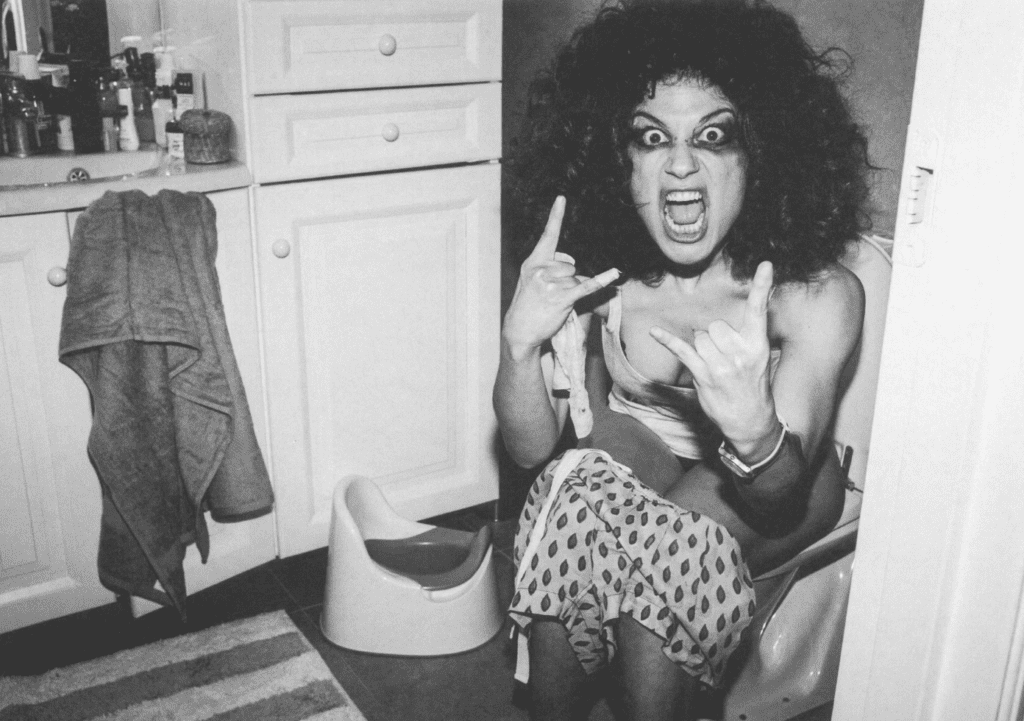
KFC: FCK Campaign #chickencrisis
Facing a logistics debacle that left them without chicken, KFC turned a crisis into a triumph with humour, honesty and humility. Their clever wordplay and transparency turned what could have been a public relations disaster into a brand loyalty miracle.
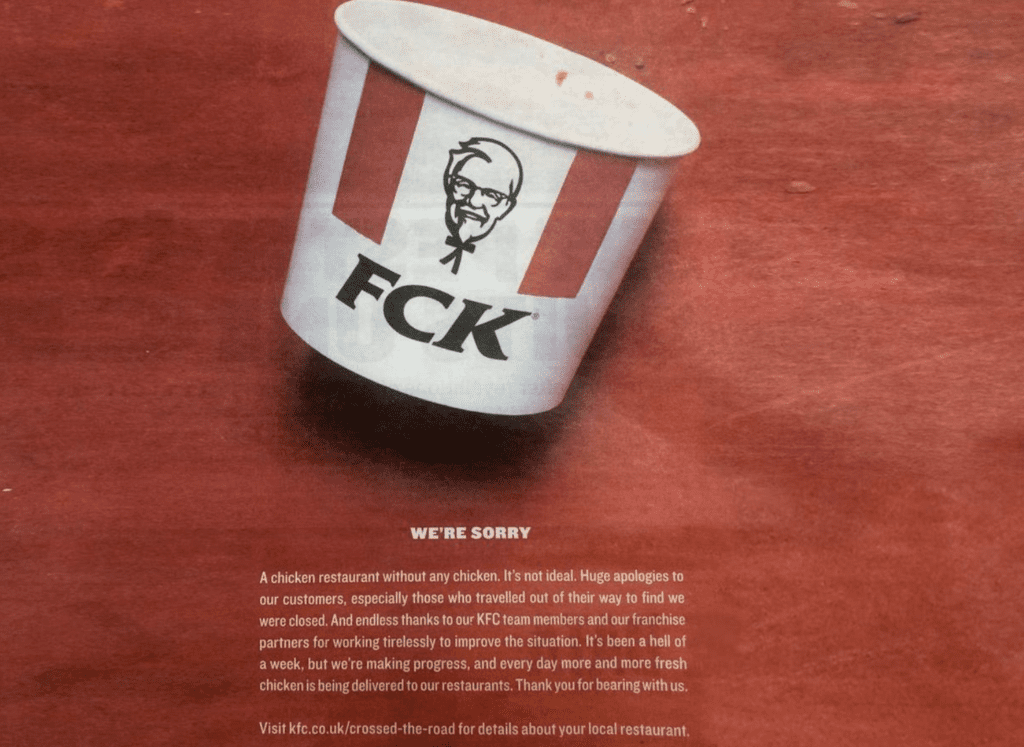
Jaguar: British Villains Campaign
Who says villains can’t have class? Jaguar’s ‘British Villains’ campaign embraced the brand’s heritage with a nod to cinematic rogues, daring to be different and positioning the car as a symbol of sophistication with an edge.
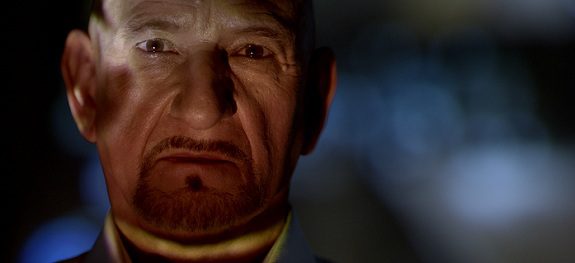
These campaigns didn’t just make a splash—they made waves that rippled across media and consumer consciousness.
The Winner takes it all
There’s a reason we invite our clients to find their brave. That’s because we know from experience that fortune really does favour those who are willing to take a chance by doing things differently. But don’t take our word for it, here’s five good reasons to push the boundaries for your next campaign.
Stand Out from the Crowd
The marketing landscape is cluttered with the noise of countless campaigns. To be noticed is to dare to be different; whether it’s subversive design, provocative messaging or unexpected executions. By breaking away from the predictable, the same old same old, brave campaigns work because they compel our attention and create deep memories.
Spark Emotions
As humans, we are hopelessly led by emotions. When a campaign peels back the layers to reveal the rawness of emotion—laughter, shock, passion—it doesn’t just speak; it shouts. Brave campaigns reach out and touch the heart, becoming more than moments—they become experiences.
Create Buzz
Courage is the match that lights the fire of conversations, both online and offline. Brave campaigns incite dialogue, kindle debates, and often go viral, multiplying their impressions far beyond the scope of traditional advertising methods.
Build Brand Authenticity
In an age where authenticity is more than a buzzword, it’s a creed, brave campaigns that embody genuine brand stories resonate loudly. They cultivate an aura of trust, legitimacy and loyalty that simply can’t be bought.
Drive Action
The most potent benefit of an act of bravery is its unparalleled ability to ignite change—to propel the onlooker from passive receiver to active participant. Brave campaigns don’t just open eyes; they move hands and feet and change hearts and minds.
A Dash of daring
Acts of bravery always resonate. As we’ve seen with exemplary campaigns from Rolling Stone, KFC, and Jaguar, a dash of daring can create a marketing masterpiece. In our endless quest to get noticed and be remembered, we must be willing to embrace courage because, it’s the bravest brands who make the biggest waves.
If you need help to find your brave and make some waves, pick up the phone and give us call. We’re ready when you are.
Let's start something
Want to talk to us about a project?
Just get in touch, we'd love to chat.
Send an email to hello@fluroltd.com
Ring on 01628 525 449
BRAND LOYALTY IN A DIGITAL WORLD
Brand Loyalty looks different today
There’s always been many factors that feed into brand loyalty. Trust, saturation, reach and relevance have and always will play a role in building loyalties, but it’s the way people respond to these factors that are changing.
Technology has become the most significant game-changer when it comes to how audiences react to brand tactics. Factors like digital submersion, the availability of information, the increased mobilisation of culture and loss of trust have had the biggest impact on the ways we engage with brands today.
The Relationship between Tech and Loyalty
No one can predict the future, especially when it comes to tech. The possibilities are expanding every day and it’s not easy to predict what’s going to stick. But we can gain insight by looking at the way each generation interacts with technology and the digital world.
Statistics show that brand loyalties are decreasing on a sliding scale with each generation.
And you can’t ignore the fact that the consumer experience is becoming more and more embedded in the digital world. Which means that existing digital marketing practices are weakening our capacity to build and maintain brand loyalties.
So, what are we doing wrong?
Digital Natives.
Being a digital native is becoming the rule over the exception. So, it’s a no-brainer that digital must be a large part of your marketing strategy. That’s where Gen Z live and that’s where the future lies.
Research.
People tend to research more today, so it’s important to be as visible as possible in various review platforms and media and social channels. Benefits, features and comparisons must be readily available and digestible for easy compare and contrast.
Value Alignment.
Gen Z want to feel personally aligned to the brands they use. 68% of Gen Z & Millennials consider the products they buy to be a reflection of their personality, values and beliefs.
So, find the points of intersection and tell the stories that matter to your audience the most.
Trust.
Thanks to fake news, bogus e-commerce, phishing scams and social spaces becoming marketplaces, our levels of trust attention are eroding. It’s no wonder younger generations are less trusting and better at spotting marketing when it’s in disguise. The takeaway here is don’t use dodgy tactics and don’t exploit the trust you do have with your audience.
Stay alert, stay tuned.
Trend forecasters believe that experience, personalisation, and innovation will remain important to building loyalty in the future. And as new technologies continue to emerge, being able to adjust quickly will be an important part of keeping engaged and loyal customers.
Building brand loyalty today is all about keeping on your toes and trying to stay in tune with each generation’s evolving relationship with technology. So, if you need help tuning in, get in touch at hello@fluroltd.com or 01628 525 449.
Let's start something
Want to talk to us about a project?
Just get in touch, we'd love to chat.
Send an email to hello@fluroltd.com
Ring on 01628 525 449
FIND YOUR BRAVE
DISCOVER WHY BEING DIFFERENT IS MORE IMPORTANT THAN BEING BETTER WHEN IT COMES TO YOUR BRAND.
You’ve heard people talk about it. Branding experts write books about it. Business empires are built upon this single foundation; be different.
Seth Godin once said, “the sound of a small bell during a dark night is louder than the din of traffic outside your window during rush hour. Surprise and differentiation have far more impact than noise does.”
Think about it for a moment. If your unique selling point (USP) is about outperforming or undercutting the competition, chances are you won’t be able to rely on that as a competitive advantage forever. Someone else can come along at any moment and do it better than you or cheaper than you.
So, what’s the one thing they can’t compete with or do better at?
Being you; your perspective, your technique and your experience and all those intangible qualities that make your business different. And when your brand is different, you will stand out.
DIFFERENT IS BETTER
Take Apple, their agenda was not about being better than the competition. Apple was all about being different and their mission to be different informed their entire brand identity and marketing approach, changing the centre of gravity for the sector and the consumer.
Okay, so if different is good, how can you make this work for your business? It’s tempting to fall back on features and benefits when it comes to differentiating your offer, but the competition always catches up. So, let’s look beyond USPs. Instead of trying to be a better version of the competition, we’ll help you become the best version of yourself. Because after all, you’re the only one who can do it the way you can. Your unique qualities and driving purpose have meaning and value far beyond mere features and benefits.
But how do you communicate all of this personality, all the layers and complexities that form your unique character? The simple answer is branding. Branding is the key to true and lasting market differentiation. A strong, distinctive brand will give you a competitive advantage that – unlike features or benefits – can’t be copied or bettered. And unlike features and benefits, we believe that the story you tell about your brand has unlimited potential. In fact, your brand story will only become more potent over time.
WHEN IT’S HARD TO BE DIFFERENT
There are plenty of situations where it’s hard to be different. Sometimes it’s because you’re new, and you’ve got nothing to leverage. Sometimes it’s because you’re familiar and you are challenging expectations. And then there are those times when the intangibility of your offer makes it feel like you’re chasing a phantom.
– When you’re brand new
Building a memorable brand can be difficult for any new product or business. After all, how will anyone ever find you if they don’t know you exist? But that’s where marketing experts can step in and lend a hand.
The business of getting your business ‘out there’ is called Brand Awareness, and it’s a core principle in advertising. It involves first creating a memorable brand identity through design, tone of voice and customer experience and making sure your brand gets noticed and remembered through a combination of inbound and outbound marketing strategies.
– When you’re lost for words
When your offer is something new, whether it’s a product, service or business model, it makes talking about your offer a real challenge because you can’t leverage an existing ‘language’. We’ve had clients present us with an offer that doesn’t easily slot into any existing sector categories or terminology. This can make it difficult to communicate your message to the world, especially in an online context where search engine optimisation and pay-per-click (PPC) rely on keywords to communicate your offer effectively.
Coining a phrase or term for your new offer poses a problem when it comes to digital marketing and communication, because if no one is using that term, keyword or phrase in their search, then how will they find you?
– When your offer is intangible and iterative
For many start-ups there is often no physical product or service to offer, especially in the early stages of development where the ‘product’ is intellectual property. Defining immaterial goods and services makes brand identity challenging because there’s fewer opportunities to use packaging and signposting to communicate your look, feel and tone of voice.
Plus, it’s tough to define a brand when the goal posts keep changing. The nature of a start-up business often means that the brand will undergo several transformations before it gets to market. This makes it hard to know when it’s the right time to commit to a brand identity. For many start-ups, creating a strong brand identity between rounds B and C can have more impact than waiting till after the final round. Even though the parameters might change again, being armed with a strong brand identity during the funding process can project confidence and present a more concrete vision.
– When your brand is established
Loss of brand equity is usually the biggest barrier a business will have when it comes to rebranding. And we get it. A drastic change in branding has the potential to alienate existing loyal customers who have strong associations with the old brand.
That why with careful research, planning and clearly defined objectives we can protect the major brand elements to preserve recognition.
Communication is key for any successful rebrand, having an official launch and sharing the reasons behind the rebrand goes a long way towards mitigating any potential loss of brand equity. A continuous effort to monitor the impact of the rebrand will mean that we’ll be ready to adapt strategies based on feedback and market responses.
FORTUNE FAVOURS THE BRAVE
“Who Dares Wins” isn’t just a Channel 4 reality series or a John Wick tattoo and as a sentiment, it goes much further back than the British SAS. The earliest record of “Fortune Favours the Brave” or something like it, has been attributed to Roman writers in the centuries before Christ and it remains potent to this day.
Why does this phrase still have so much power?
Because it’s not easy being brave. If it was, everyone would be. Only those who overcome their fear of failure, their fear of change and challenge will win the ultimate prize of success and good fortune.
Sounds intense, doesn’t it? But in reality, being brave doesn’t start with confidence. Being brave starts with determination and courage can be learned and developed. It’s not about leaping blindly into the unknown, it’s about being observant, learning how to evaluate risk and recognise opportunity when it comes knocking.
HOW TO FIND YOUR BRAVE
We don’t expect everyone to be comfortable with our approach at first and it’s important to know that we don’t equate being brave with being foolhardy. For us, being brave is about self-awareness, understanding and great timing. To help you understand our approach, we’ve put together a list of Five Ways to Find Your Brave;
A balanced perspective
Fear can be useful. If we acknowledge our fears, we’re one step closer to overcoming them.
Identify your strengths
When you’re confident in your abilities, you’re much more willing to go all-in when an opportunity presents itself.
No risk, no reward
What’s the worst thing that could happen if you take a risk? Now compare that scenario to what will happen if you do nothing at all?
The Comfort Zone
Build your courage muscles by pushing yourself outside of your comfort zone slowly and more often. Get comfortable with feeling uncomfortable. Make peace with uncertainty.
Failure=winning
When you take a risk, you never really lose because you either succeed or you learn from your mistakes.
Being guided through the process by someone who’s done it before and has the skill to uncover and define what makes you special will make all the difference to your journey. Having a like-minded creative partner will help you build and market a brave brand. A brand so different and so strong that it will the only reason your customer chooses you.
Let's start something
Want to talk to us about a project?
Just get in touch, we'd love to chat.
Send an email to hello@fluroltd.com
Ring on 01628 525 449
Do I really need branding?
It’ll come as no surprise from a branding agency, but we believe that a brand should form the foundation of all your marketing activities. Building a brand is like weaving a thread into everything do. Your brand should inspire and inform everything from your packaging and social media to your templates and tone of voice.
“A brand is a story that is always being told.”
Brandstream founder Scott Bradbury
It’s the one story that you’re allowed to tell again and again. And it’s the one story that matters most when it comes to carving out your niche in the market. So, yes, the short answer is that you do need branding. But if you don’t believe us, here’s some pretty great reasons why.
Why You Need Branding… really
1. Consistency is key
Your brand is usually the first point of contact you’ll have with your customers. Being consistent is critical to that first impression and instrumental in being recognised again in the future.
Your logo, signature colour palette, fonts and tone of voice work together to create your brand. And if any of these elements are changed or adapted, used in the wrong place or in the wrong way, it can weaken first impressions, your brand and your reputation.
Having a brand book is the best way to ensure that your brand is always presented consistently and authentically.
2. Get noticed
There’s an old saying that “the riches are in the niches”. Everyone knows that trying to be everything to everyone never works and yet we hear it all the time, “but our product is for everyone.”
We get it, no one likes to miss an opportunity. But if you don’t want anyone to miss out, then you’re never going to stand out. When you confidently position yourself as exactly what your customer needs, it allows you to be more specific, and plan your strategy with laser accuracy.
3. Remember your audience
It’s natural, logical even, to want to talk about yourself when it comes to selling your business. But here’s a truth you might not want to hear. Your customer doesn’t care about you, they care about themselves.
We’re all the main characters in our life story. Good branding will make you a welcome guide in your customer’s story, instead of a pushy passer-by who wants to take over.
Not having a consumer-centric mindset is a common mistake that we see all the time whether it’s web copy or ad campaigns and it can often worm its way into strategic planning. To find out if you’re guilty of this, have a read over your copy and see if the words ‘we/us/our’ appears more than ‘you/your/you’re’.
4. Be strategic
Not having a brand strategy is like trying to find your way to Stevenage without a map. You wouldn’t risk it would you? Because while you might have a general idea of where you’re heading, the chances of finding it without assistance is slim to none.
Aside from giving your brand direction and a framework to build on, the most important job of a brand strategy is to give your business purpose. Having a reason to exist outside of ‘making money’ and ‘selling our thing’ will empower you to set your brand apart from the competition and shape the way your brand is perceived by others.
5. Embrace emotion
People don’t buy things, they buy feelings. No matter who you are or what you’re selling, it’s not the end goal for your customer. For them, it’s a vehicle to the feelings that they’re seeking.
We’ve seen it time and time again, websites, ads or emails that lead with features. Stop doing that. Don’t even lead with the benefits. Instead, try starting the conversation by creating a feeling, specifically the feeling your customer gets when they use your product or service.
Don’t believe us? Well, we encourage you to do your research, there’s plenty out there. According to Psychology Today, research showed that very negative or positive emotions about your brand or brand experience will never be related to material factors. To get that “wow” response and delight your customer, the experience always ties into that emotional human factor.
Let's start something
Want to talk to us about a project?
Just get in touch, we'd love to chat.
Send an email to hello@fluroltd.com
Ring on 01628 525 449
Heroes, Villains and Catastrophe – Why Storytelling Sells
In our previous blog post, we looked at how storytelling can influence everything from brand story to design strategy. You can read more about the science of storytelling in this article, but for now, let’s figure out how you can apply the basics to your brand and learn how character and crisis are powerful tools in your storytelling toolbox.
Who cares about your message?
Great drama doesn’t exist without great characters. Whether you’re empathising with Hannibal Lector or Peter Parker, if you care about the character, you’ll stick around. The people in your story are your messengers, so if we don’t care about them, why should we care about the message?
Alfred Hitchcock said, “The more successful your villain, the more successful the picture”. While this doesn’t mean your ‘story’ has to have a bad guy, it does mean that your characters must have substance. When you build your brand story or next campaign, consider the characters at the heart of the story and how to bring out their most interesting traits.
Choosing a great messenger
John Yorke, who literally wrote the book on storytelling says, if there’s nothing to offend us, “then there’s certainly nothing to attract our attention either.” He believes it’s “the rough edges, the darkness” that draws us in. We might not want to admit it, but we all have a dark corners and while it’s rarely the obvious route when it comes to promoting your brand, it’s worth keeping in mind that ‘nice’ doesn’t always win hearts.
Remember Walter White from Breaking Bad? Such a deeply flawed character and so full of conflict but one of television’s most beloved characters. And don’t forget Cersei Lannister, Hannibal Lector and who doesn’t love the Joker? The beloved baddie is a little harder to find in advertising. While there’s been more than a few ads that didn’t quite manage to capture the allure of the baddie, Jaguar’s Good to be Bad campaign is a sterling example of how the bearer of your message doesn’t always have to be nice.
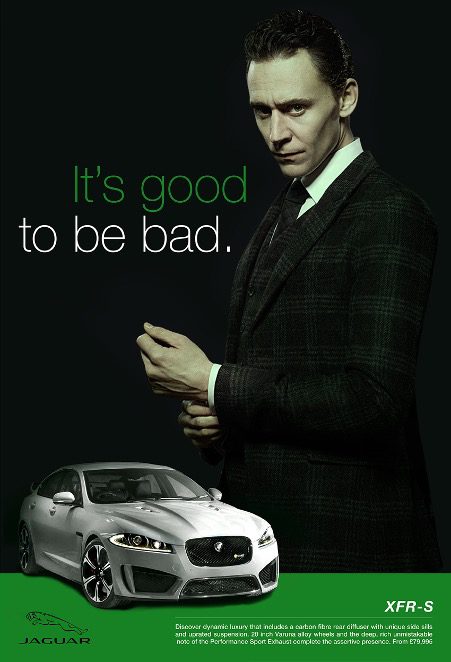
Find the crisis in your call to action
Creating a narrative is one of the best ways to persuade your audience to believe what you’re saying, and the key element to writing a good story is known as ‘the inciting incident.’
Yorke describes an inciting incident as the crisis of the story, or the problem that needs to be solved. The inciting incident is the moment your character is faced with an obstacle and forced to ask themselves the most important question, ‘what kind of person am I?’
In an ad campaign or brand story, it’s this crisis that provides the opportunity for your brand to provide the solution; it’s the ‘why’ behind your product/service.
Persil’s Dirt is Good campaign demonstrates a shrewd use of crisis. Persil insinuate their brand as a hero solution to the widespread concern that children aren’t playing outside enough.
A well-crafted, imaginative or dynamic inciting incident can lead to an equally excellent Call to Action. Give your audience to a reason to click, buy or call; give them a reason to care.
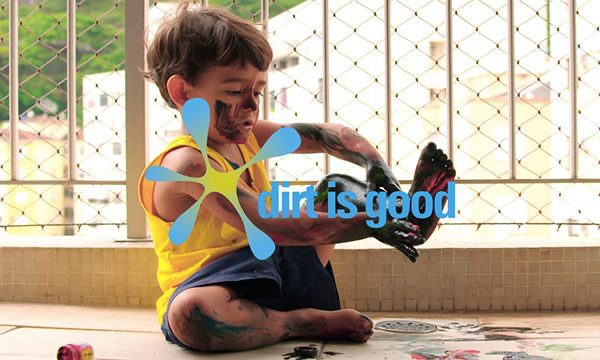
Story creates meaning
It’s a well-documented fact that when a person reads, sees or hears a well-told story, their brain reacts as if they are experiencing it themselves.
Stories have a unique ability to build connections and a great creative agency knows how to tap into this super power to create better, more engaging results.
Let's start something
Want to talk to us about a project?
Just get in touch, we'd love to chat.
Send an email to hello@fluroltd.com
Ring on 01628 525 449
Strategic Thinking
Strategy at a Creative Agency
Whether it’s design, copywriting or brand strategy, the work we do at a creative agency happens in the liminal space between an objective and its end. At Fluro, we use our creative skills to influence the way an objective reaches its end. To use a real-world example, if a carton of milk is the object, and the consumer is the end, then an advertising campaign is the means to connect the consumer with the milk.
Our copywriter attended Uri Baruchin’s short course at D&AD about strategic thinking. This is a big topic, and there’s a lot of wisdom out there about how to ‘do strategy’. And while we don’t want to ruin the surprise, we thought it was safe to share the bigger lessons we learned from Uri’s Think, Plan, Act workshop.
We are all strategists
While you might not consider yourself a strategist, you are a strategic thinker. Apparently, we all are.
Uri used a 1995 research paper about public toilet stalls to demonstrate the role that strategy plays in the selection process. In the Psychological Science journal, Nicholas Christenfeld conducted a study on which public toilet stalls are most commonly chosen. He used this data to illustrate the way we use strategic reasoning on a daily basis.
And when it comes to developing a creative strategy, developers, designers and writers are all part of the strategic picture and we all contribute in our different ways.
As well as being an interesting way to break the ice, Uri’s example helped us understand the dangers of choosing “the middle stall” when it comes to strategic brainstorming.

Strategies that stand out
It’s very easy in a studio environment to get into a creative groove, where the same people keep doing the same things in the same ways. If you keep doing – strategy or creative – the same way every time, you will keep getting the same results. We’re all guilty of this, because in the end, it’s hard to not be you right? And as much as we fall into this trap as individuals, it’s also happens in group work and in society at large.
A group task challenged the learners to come up with a strategy for a gin campaign. We were broken up into groups to come up with a strategy for our chosen tipple. When we all came back into the room to share our ideas, it was shocking to see how similar our strategies were.
This simple task made it obvious that there’s no benefit to staying in your own creative lane. On the contrary, it pays to open the discussion and always cast the net wider to explore those less popular, less obvious perspectives.
Whether it’s a small group in an agency, a community, or a society – we often tend to think along similar pathways – and the result is that we all come to similar conclusions. Needless to say that it pays to take the path less travelled, unless you want to end up in the same place as everyone else.

Managing strategic and creative processes
The final lesson from Uri’s workshop was that strategy is messy work. There’s a lot of ideas and opinions flying about and it’s not always easy to distinguish the great ideas from the good ones. As much as there are some really useful guides and templates, workshops and mind maps available, there is no magic formula to making hard decisions. Being a good decision maker comes down to experience and judgement.
While Uri didn’t have the secret to making good decisions, he did provide a handy set of tools to help us guide ourselves through the hard parts; the messy processes between research, concept and execution.
After all, the act of creating is really just a series of decisions. A writer wrestles with decisions about words, narrative and motivation. Designers have decisions to make about colour, spacing, typography etc.
Perhaps the most powerful lesson of all was realising that not only are we all strategic thinkers, but we’re also all creative thinkers. And we will always do better when we work together.
Let's start something
Want to talk to us about a project?
Just get in touch, we'd love to chat.
Send an email to hello@fluroltd.com
Ring on 01628 525 449




